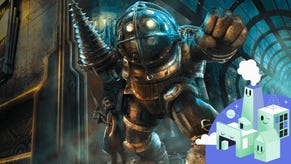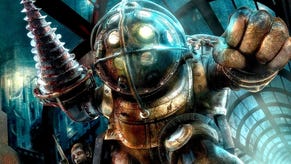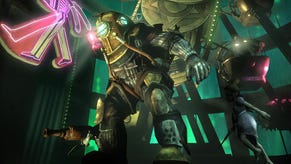Moral choices came late to BioShock
Little Sisters not in original plan.
Ken Levine has revealed that the moral choice behind harvesting or saving the Little Sisters in BioShock was a relatively late addition to the game.
The 2K Boston boss was speaking at the Develop conference in Brighton this morning, discussing the evolution of BioShock and how the these moral decisions were implemented as a result of creating the Little Sister character.
Although the game initially started with the idea of both protective characters and gatherer characters, only the Big Daddy concept was retained from early in development. The gatherers, on the other hand, didn't become Little Sisters until late in the day - having earlier taken on forms including insect- and worm-like creatures, according to lead technical artist Nate Wells.
Wells explained that the girls were originally created to create a meaningful relationship between the gatherers and the Big Daddy characters - with this strange, twisted "father / daughter" relationship being easy for players to understand.
By turning the gatherers into Little Sisters, Levine expanded, the team created a moral choice - and that choice, in itself, informed much of his later thinking on the kind of capitalist utopia Rapture was.
"We ended up with a game where we had to confront this moral choice, rather than setting out to create that choice," Levine explained.
According to technical director Chris Kline, the Little Sisters also solved a major gameplay problem - gatherers at one point were slug-like creatures, and players tended to kill them for no reason, since "that's what you do to slug-like creatures".
Other elements of the game, too, emerged at a later point rather than being in the design from the outset. Among them was the concept of telling the stories of key characters in each level - the first of which to emerge was that of Dr Steinman, the insane plastic surgeon.
"We can't tell the story of everyone in Rapture, all these thousands of people," reasoned Wells, "but we can tell eight or nine of them - and let that encapsulate the whole story."
Steinman's story is built gradually throughout his level, thanks to various pieces of art and tableaus set up on the level itself, along with audio logs the player picks up (Levine is somewhat disparaging about these, describing them as "old technology that we used to fill in the blanks"). By the time you meet him at the end of the level, Levine says, "you know who he is... Without that, he'd just be another puppet on strings, another boss you need to put a DoT or crit on".









